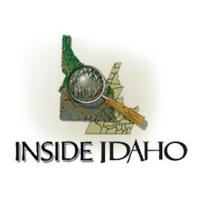These data were created primarily as a visual aid to meet the business needs of Avista Corporation as well as partners in the Kootenai County Consortium.
This data series contains 74 6-inch 4-band natural color (RGB) and near infrared (NIR) digital orthoimage tiles. The data cover the City of Moscow, Idaho. The source imagery used in the production of the orthoimages in the collection was acquired May 7, 2012. An orthoimage is remotely sensed image data in which displacement of features in the image caused by terrain relief and sensor orientation have been mathematically removed. Orthoimagery combines the image characteristics of a photograph with the geometric qualities of a map.
Data processing of ADS40-SH51 imagery and metadata is a streamlined digital workflow process utilizing Premier Geospatial's proprietary software and commercial softcopy photogrammetric software including Applanix, GPro, ORIMA, Pictovera, and Orthovista. The ADS40-SH51 sensor GPS/IMU position and attitude data is directly processed through three separate but continuous steps: Applanix POSPAC for data extracting, PosGPS for data analysis and POSProc for data measurement. The post-processed GPS data output is displayed onto the flight profile plot, which clearly shows the RMS values of the combined separation, C/A Code and Carrier Phase. The output GPS/IMU data is also verified by a PDOP plot and PDOP values are compared to an acceptable threshold range. The processing on ADS40-SH51 images is based on Pictovera software for bundle adjustment. Image tie points providing the observations for the least squares bundle adjustment were selected from the images using an autocorrelation algorithm. A least squares bundle adjustment of image pass points, control points and the ABGPS was performed to develop an aerotriangulation solution for each block using Pictovera software. Upon final bundle adjustment, the triangulated strips were ortho-rectified to the DEM. Digital elevation models (DEM) auto-correlated from imagery acquired for project items will be used in the orthorectification process. The PictoVera autocorrelation module is used to generate digital surface model (DSM) mass points for each survey line. The autocorrelation module uses an APM algorithm to measure mass points from the forward, nadir, and backward images; searching in the three images throughout the entire width and length of each flightline for matching features. The DSM mass points will model the ground surface and above ground features, and must be filtered to a digital terrain model (DTM) representing only ground features for use in orthorectification. PremierGeo uses the SimActive Correlator 3D software to generate the required DTM from the PictoVera DSM. Correlator 3D uses geometric algorithms to identify and filter above ground features from the DSM based on size and shape. The filtered DTM is then interpolated to a regularly gridded DEM for use in the PictoVera rectification module. The DEM is reviewed for any elevation anomalies that would introduce image smearing during orthorectification, and manual edits made as necessary to remove any anomalies. Orthorectified imagery is checked and radiometricly balanced in a parallel process that utilizes custom gradient correction software and the INPHO Orthovista Radiometrics editor. Once both processes have passed rigid AT and QC milestones, the imagery bands, red, green, blue, and grey are rectified to a 4-Band RGBG product. These orthos are passed to the mosaic team for QC, seam line placement and tiling using the interactive capabilities of Orthovista software. Following the application of seamline and final tonal adjustment, the orthoimagery is cut to a custom tiling index.
Access Constraints: Access to and use of these data are restricted to those affiliated with the University of Idaho.
Use Constraints: The orthophotos described by these metadata are have been produced for the Avista Utilities. The original orthophotos may not be redistributed without these metadata. Derivatives of these orthophotos that are redistributed must be accompanied by metadata that cite the original data.
Data and Resources
| Field | Value |
|---|---|
| Modified | 2019-03-19 |
| Release Date | 2012-07-27 |
| Rights | Affiliated with the University of Idaho |
| Publisher | |
| Identifier | 9caed21f-8f8e-4f5a-bcc9-ec573f9a4cfa |
| NKN Identifier | eca47d87-4414-456a-bad4-ee75c3fa613e |
| Spatial / Geographical Coverage Area | POLYGON ((-117.03941345215 46.704140635072, -117.03941345215 46.761557183768, -116.94808959961 46.761557183768, -116.94808959961 46.704140635072)) |
| Spatial / Geographical Coverage Location | Moscow, Idaho, USA |
| Temporal Coverage | Sunday, January 1, 2012 - 00:00 |
| Language | English (United States) |
| License | |
| Granularity | 6 inch |
| Author | |
| Contact Name | Bruce Godfrey |
| Contact Email | |
| Public Access Level | Restricted |


![[Open Data]](https://assets.okfn.org/images/ok_buttons/od_80x15_blue.png)